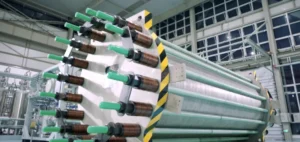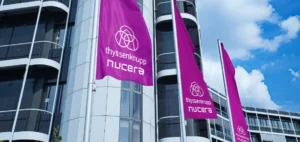In Canada, companies are rushing to ship renewable hydrogen to Europe by 2025.
A favorable location
Canada, especially the eastern part of the country, appears to be a potential source of choice for renewable hydrogen. Indeed, the region benefits from an advantageous wind exposure to generate electricity. Moreover, the area benefits from short distances to the European continent.
Several companies like Brookfield Renewable Partners and World Energy are looking to develop regulatory plans. Enbridge, Canada’s utility giant, is also considering hydrogen development in the region. However, companies face obstacles, such as equipment shortages and local opposition.
Ambitious objectives
According to Enbridge, the 2025 export target is ambitious. A large part of hydrogen production uses natural gas or coal. However, companies want to produce emission-free renewable hydrogen by separating hydrogen from oxygen in water using wind-powered electrolyzers.
The world produces 3.5 million tons of renewable hydrogen per year. This production could reach 31 million tons per year by 2030. However, hydrogen was generating hype decades ago, but not much.
Partnerships
Germany and Canada sign a non-binding agreement in August to ship Canadian renewable hydrogen to Germany by 2025. In the Canadian province of Newfoundland and Labrador, World Energy is planning a project to export ammonia from late 2024. The company’s project is worth $12 billion.
A subsidiary of World Energy wants to build 164 wind turbines on the Port Peninsula in Newfoundland. The objective is to supply a new hydrogen plant. However, this project would radically change life on the peninsula, where 4000 people live.
Local opposition
Opponents fear the destruction of nature for the sake of profit or to supply Germany. World Energy says it will not proceed without a provincial environmental permit for the turbines. In addition, the company will consider community feedback for turbine placement.
Finally, the German energy companies E.ON and Uniper are signing non-binding agreements with EverWind Fuels. Based in the Canadian province of Nova Scotia, EverWind Fuels ships one million tons per year of renewable ammonia. The company aims to start shipping 200,000 tons by 2025.
An industrial issue
Supply chains are developing faster than expected before Russia invaded Ukraine. However, renewable hydrogen does not yet have a large-scale economy, according to Teresa Jaschke, spokesperson for the E.ON Group. It compares hydrogen to solar modules, which were previously considered uneconomical.
In Newfoundland, a Toronto-based subsidiary of Brookfield is planning a wind farm. It also wants a $1.46 billion plant to produce 200,000 tons of ammonia per year. However, the renewable hydrogen production chain represents an important industrial challenge.






















